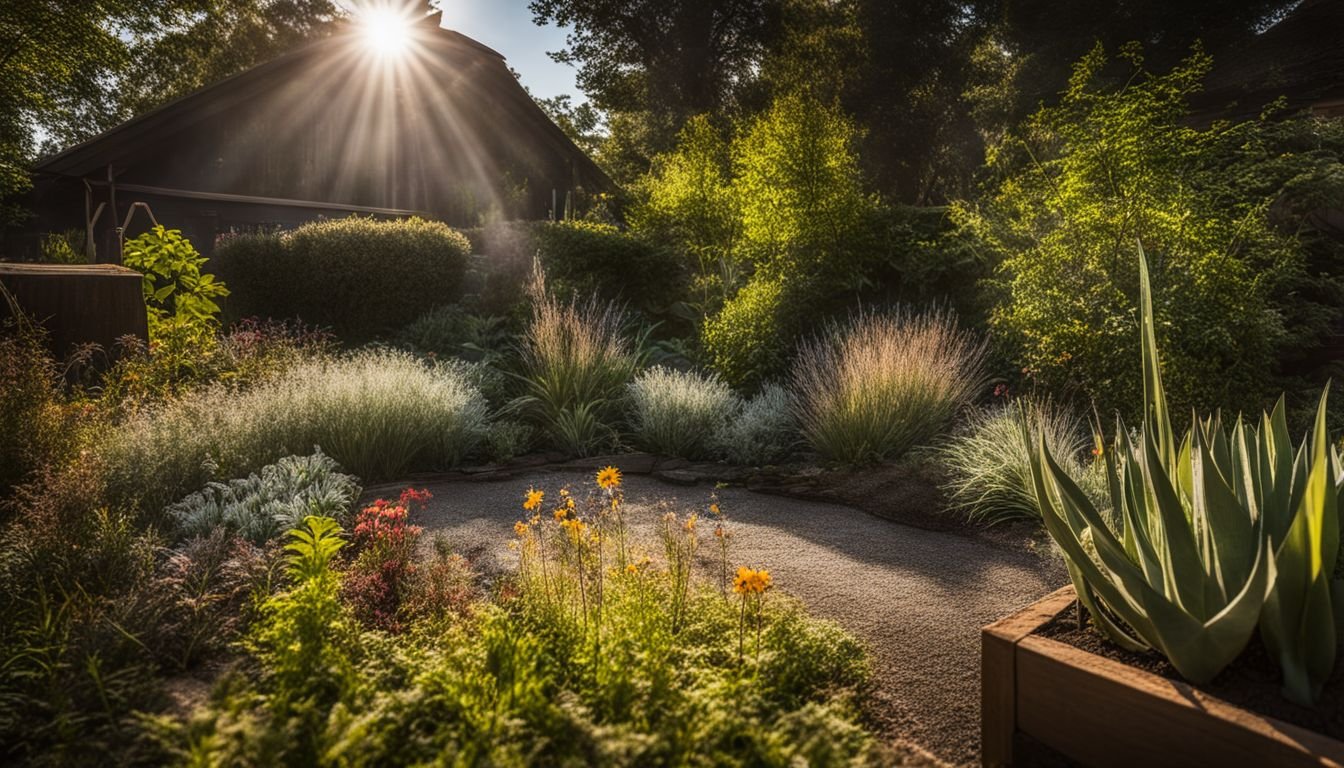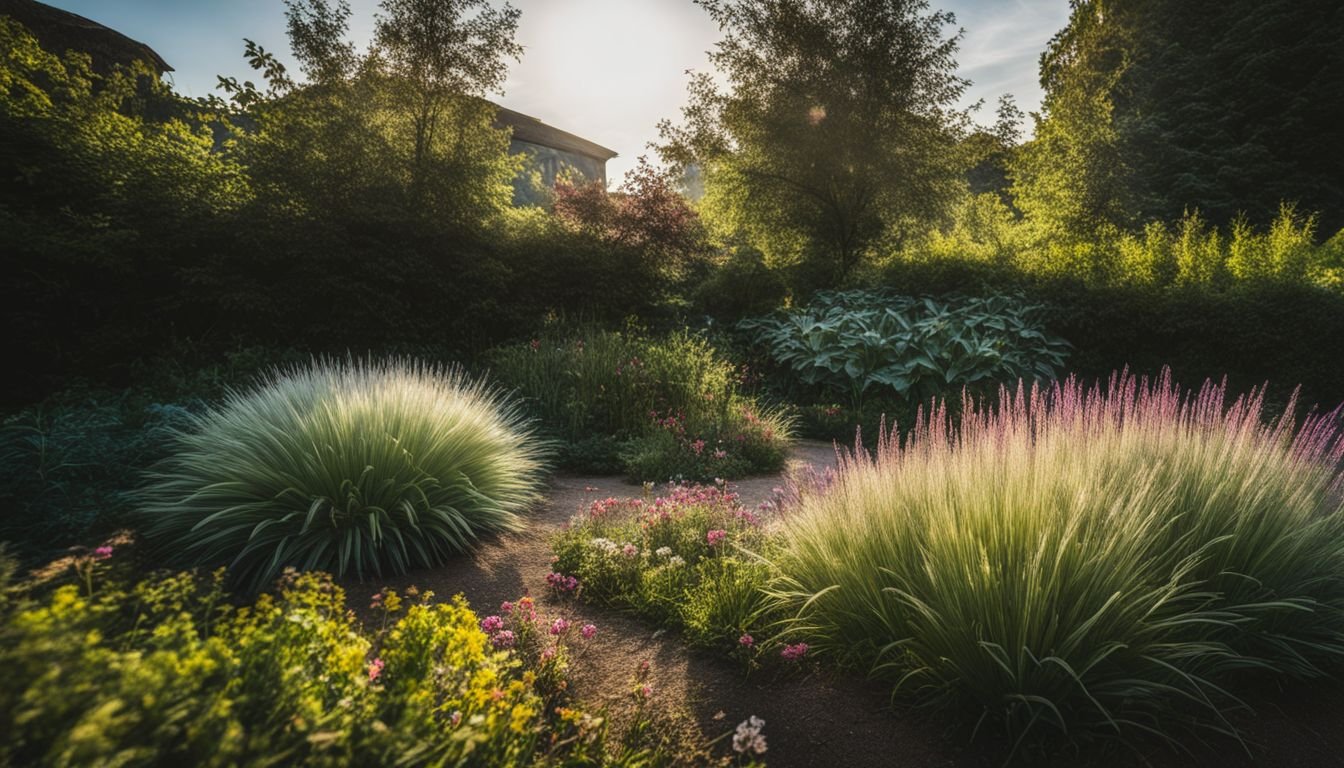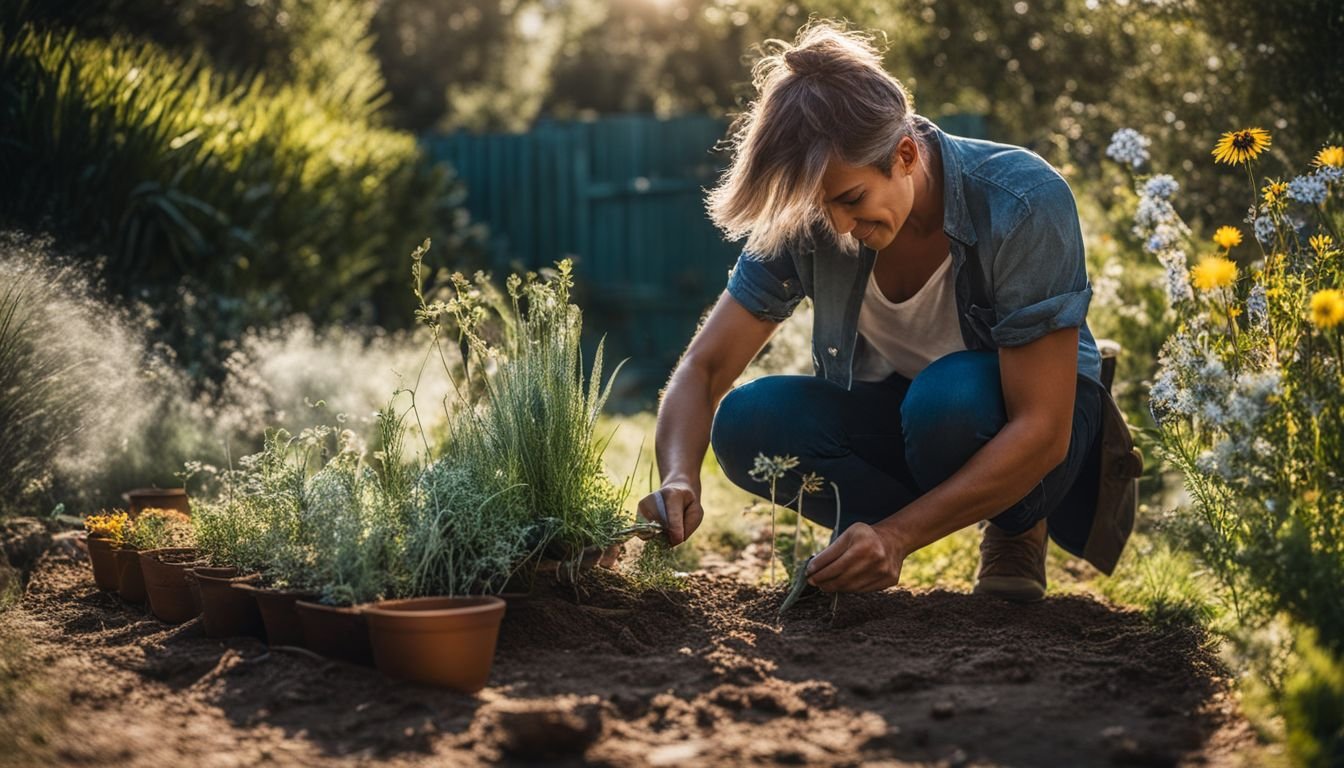Ever found yourself standing in the garden, squinting under the Aussie sun, and thinking it all looks a bit too parched for comfort? You’re not alone. Many of us are on the hunt for that perfect touch of greenery that doesn’t just keel over when the weather turns scorching.
Well, good news – your search might just be over. We stumbled upon a real gem; say g’day to Senecio Blue Chalk Sticks. This South African succulent is as tough as old boots and absolutely thrives in our hot climate.
This hardy little beaut loves nothing more than basking in full sunlight, adding a splash of stunning blue to any spot without asking for much water in return. It’s pretty much tailor-made for Australian gardens.
In this yarn, we’ll walk you through how to plant these chalk stick plants and keep them thriving, even when the going gets tough. From getting your soil right to tackling any pesky issues head-on, we’ve got all bases covered.
Time to give your garden a fair dinkum transformation!
Key Takeaways
- Chalk stick plants, known as Senecio Blue Chalk Sticks, are perfect for Australian gardens because they love the sun and don’t need much water to thrive.
- When planting chalk stick plants, it’s essential to choose a sunny spot with well – drained soil. If your soil retains too much moisture, mix in gritty material like sand or perlite to improve drainage.
- Water your chalk stick plants only when the soil has completely dried out. They store water in their leaves, so overwatering can harm them by causing root rot or making leaves turn yellow and drop off.
- Pruning back dead flower stalks and maintaining your plant helps encourage new growth. Use sharp tools for this job and be gentle to avoid damaging the delicate stems.
- If chalk stick plants don’t get enough light, they might lose their vibrant color and stretch toward the nearest light source. Move them to a brighter spot if you notice this happening.
Steps for Planting Chalk Stick Plants

We all get excited about adding new green friends to our gardens, especially those that can sprinkle a bit of magic across the landscape like chalk stick plants do. Getting these drought-tolerant groundcover plants into the earth starts with setting up their home right.
We must choose spots where the sun shines generously and ensure the soil drains water well because soggy feet are a big no for them. Grabbing a shovel or trowel, we dig small homes in the prepared bed and gently nestle each plant in, making sure they have room to stretch out as they grow.
Preparing the Soil
First, choose a spot in your garden where the sun shines bright. Chalk Stick plants, or Senecio serpens, thrive under full sunlight. They love to soak up those rays for vibrant color.
Next is making sure the earth beneath them drains well. This step can’t be skipped as our chalky friends don’t like wet feet! If you find your soil holds too much water, mix in some gritty material like sand or perlite.
This creates spaces in the soil so water can flow through more easily.
Now let’s talk about getting that ground ready for planting. Grab a shovel and turn over the top layer of soil; this aerates it and makes it easier for roots to dive deep. Mixing in organic mulch helps too – it keeps moisture but also ensures drainage isn’t blocked.
For pots and hanging baskets, pick a potting blend designed for succulents or cacti; their needs match our drought-tolerant chalk stick plant perfectly.
Remembering these steps ensures your groundwork supports healthy growth right from the start. Whether setting roots into coastal gardens or adding greenery with groundcover roles across xeriscape landscapes, preparing well promises lush growth ahead without constant watering woes.
Planting Process
To start, choose a sunny spot since Chalk Stick Plants thrive in full sunlight. Ensure the area has well-drained soil to prevent water from pooling around the roots, which could harm the plant.
Mixing in some quality potting mix can improve soil drainage and provide nutrients that help young plants grow strong.
Next, take your Chalk Stick Plant tubestock and gently remove it from its container. Be careful not to damage the delicate root system as you do this. Create a hole in your prepared soil that’s just big enough for the root ball.
Place your plant in the hole and fill it back in with soil, patting down firmly to eliminate air pockets. Water your newly planted succulent right away to help settle the soil around the roots.
Moving forward after planting is all about giving these drought-tolerant plants proper care to ensure they flourish into an eye-catching ground cover or an attractive addition to xeriscape landscaping projects.
Caring for Your Chalk Stick Plants

Taking care of your chalk stick plants, known scientifically as Curio repens, means giving them the right amount of water and food. They’re drought tolerant, so they don’t need water every day.
Keep their soil moist but not too wet to help them grow strong and healthy. Pruning them helps keep them looking neat and encourages more growth. Use sharp shears to cut back any overgrown or dead parts of the plant.
This keeps your chalk stick plants in top shape and ready to thrive in Australia’s climate.
Watering and Feeding
Growing Chalk Stick Plants, or Curio repens, can be a rewarding experience if we follow the right steps. One of the key aspects to success is proper watering and feeding. Here’s how we care for these drought-tolerant beauties:
- Wait for the soil to dry out completely before watering. Chalk Stick Plants store water in their leaves, which enables them to survive longer periods without moisture.
- Choose early morning or late afternoon for watering. This prevents water loss due to evaporation and gives plants time to absorb moisture before the heat of the day sets in.
- Use a deep soaking technique infrequently rather than frequent shallow watering. This encourages roots to grow deeper into the ground, making plants more robust and drought-resistant.
- Apply a slow – release fertiliser at the start of spring. This provides steady nutrients over several months, supporting lush growth without overwhelming your plants.
- Avoid overfeeding; one application of fertiliser per year is enough. Excess nutrients can harm these succulents more than neglect would.
- If growing Chalk Stick Plants in containers, ensure pots have holes for drainage to prevent soggy soil conditions that can lead to root rot.
- During hot dry spells, consider using a mulch layer around your plants in the garden. Mulch helps retain soil moisture and keeps roots cooler.
By sticking to these practices, we provide our Chalk Stick Plants with an environment they thrive in—mimicking their natural habitat where rainfall is scarce but occasional downpours provide all needed moisture and nutrients.
Pruning and Maintenance
After we’ve made sure our chalk stick plants get the right amount of water and food, it’s time for us to talk about keeping them looking their best. Pruning and routine care play a big role in this. Here’s how we can keep our Senecio plants healthy and attractive:
- Check for Dead Flower Stalks: Our main job is to look out for dead flower stalks. These don’t help the plant anymore, and removing them helps encourage new growth. Use a pair of sharp secateurs or scissors for this task.
- Use the Right Tools: Having clean, sharp tools makes this job easier and keeps our plants healthy. Before we start, we always make sure our cutting tools are disinfected to prevent spreading diseases between plants.
- Timing is Key: The best time to prune is during the plant’s dormant phase. This usually falls in the late winter or early spring before they start their active growing phase again.
- Gentle Handling: Chalk stick plants have delicate stems, so we need to handle them gently when pruning. Avoid pulling or tearing which can harm the plant.
- Regular Checks: We keep an eye on our plants regularly for any signs of disease or distress. Catching issues early makes them easier to manage and often saves the plant from serious damage.
- Encourage Bushier Growth: If we want our chalk stick plants to grow more densely, we can pinch off the tips of young stems during the growing season. This encourages the plant to branch out more.
- Clean Up Fallen Leaves: Keeping the area around our plants clear of fallen leaves and debris reduces the risk of pests and diseases taking hold.
- Consider Soil Health: While not directly related to pruning, keeping an eye on soil conditions affects overall plant health. Well-drained soil ensures that water doesn’t accumulate at the roots causing rot.
By following these easy steps, we ensure that our chalk stick plants not only survive but thrive in Australian gardens, showing off their best colours and forms under the sun.
Common Issues and Solutions in Chalk Stick Plant Care
Chalk stick plants love the sun and need soil that drains well, but sometimes we run into a few hiccups. One common problem is overwatering. These plants store water in their leaves, so they don’t need much from us.
If their leaves start turning yellow or dropping off, it’s a sign we’ve gone too heavy on the water. The fix? Let the soil dry out before watering again. This simple step helps prevent root rot and keeps our chalk sticks happy.
Another issue could be not enough light. Even though they’re tough and can handle some shade, too little sunlight causes them to lose their vibrant color and become leggy as they stretch toward the light source.
We solve this by moving them to a spot where they’ll get plenty of sunshine throughout the day. Dead flower stalks might also appear; these should be snipped off right at the base to keep our plants looking neat without harming them.
Conclusion: Enjoying Your Thriving Chalk Stick Plants
Growing chalk stick plants in Australia brings joy and vibrant greenery to your garden. With the right care, these succulents flourish, becoming a standout feature. By providing them with well-draining earth, ample sunlight, and just enough hydration, you ensure they thrive.
These hardy plants ask for little but give back much in beauty and ease of care. So go ahead, add Senecio Blue Chalk Sticks to your outdoor or indoor space and watch them transform it with their unique charm.
FAQs
1. What are chalk stick plants?
Chalk stick plants, also known as Senecio serpens or blue chalk sticks, are succulent plants with long, finger-like leaves that have a striking blue-green colour.
2. How do I grow chalk stick plants in Australia?
To successfully grow chalk stick plants in Australia, plant them in well-draining soil and place them where they can get plenty of sunlight. Remember to water them sparingly since they store water in their leaves.
3. Can I keep my chalk stick plant outside all year?
Yes, you can! In most parts of Australia, chalk stick plants thrive outdoors year-round due to the country’s warm climate. Just ensure they’re not exposed to frost during cooler months.
4. Do I need to enable cookies on gardening websites for better advice on caring for my chalk stick plant?
While enabling cookies on gardening websites isn’t necessary for growing healthy chalk sticks, doing so can improve your browsing experience by providing personalised care tips and relevant information based on your interests and past searches.
